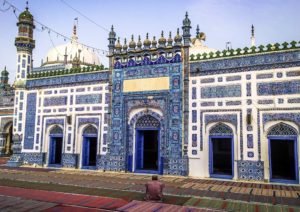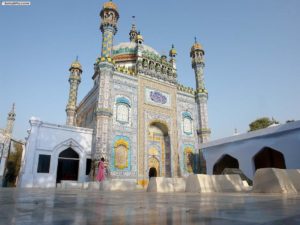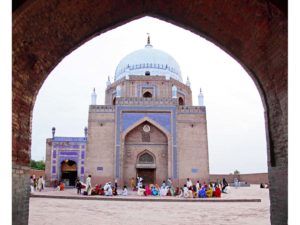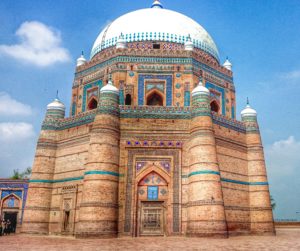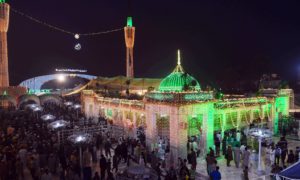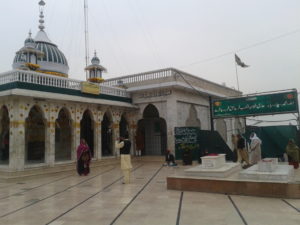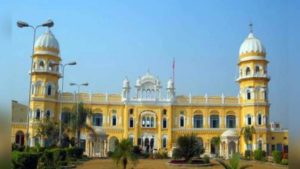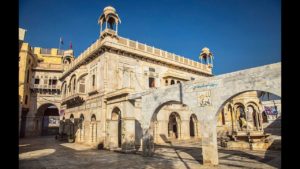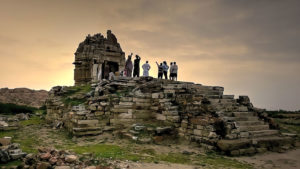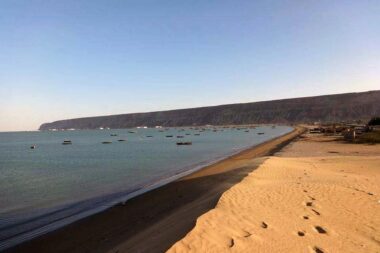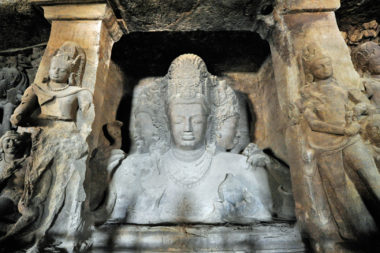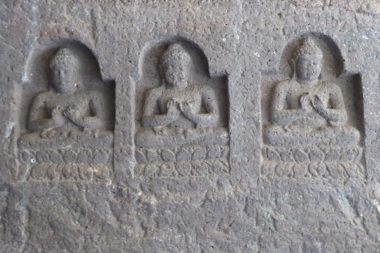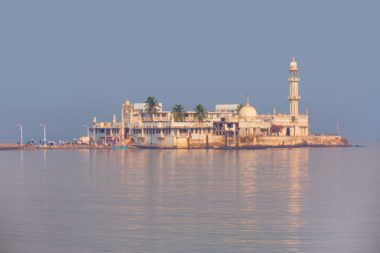Sufism and mysticism have a significant relation to the land of Pakistan. Pakistan has witnessed many Sufis, mystics, and saints, teaching the lessons of divine love. The belief that the blessings of the Sufis are evident around their burial sites has led to the establishment of many shrines in South Asia. Pakistan has shrines of Muslim figures as well as shrines of figures from the minor religions too. The devotees visit the shrines regularly. Qawwali programs are commenced, and annual functions of Urs are held in these sanctuaries. Here are some of the shrines that welcome thousands of devotees every day.
The Holy Shrines of Islam
Shrine of Abdullah Shah Ghazi
In the year 762 CE, Abdullah Shah Ghazi came to settle in Sindh as a consequence of his father’s killing. He came to be known for his persuasive speech and eloquent manners. Unfortunately, he was ambushed in a forest by his enemies. His followers buried him on the shores if Sindh, where he first set his foot in the area.
This is where the shrine stands today, area that is now part of Karachi. The devotees from all social classes and religions pay visits to the shrine. An Urs is held every year that witnesses thousands of visitors. Regular festivities such as Qawallis and dhamaal are also held in the premises.
Shrine of Shah Abdul Latif Bhittai
Shah Abdul Latif Bhittai was a philosopher, Sufi saint, mystic and a poet. He is regarded as the greatest Muslim poet of Sindhi language. He was immensely influenced by Rumi and a lot of similarities can be seen in the beliefs and expressions of Rumi and Bhittai. His shrine is located in the town of Bhit Shah in the district of Hyderabad. The present-day lay out of the shrine was built in 1772. The shrine has a mosque and a mausoleum.
His Urs takes place every year at the shrine, in the second month of Islamic calendar. The event witnesses up to 500,000 visitors from all the country.
Shrine of Abdul Wahab Faruqi (Sachal Sarmast)
Sachal Sarmast was born in 1739 in a village called Daraza in Khairpur. His name was Abdul Wahab Farooqi and was called “Sachal Sarmast” by his disciples, which became his eke-name.
His shrine is located in Sindh, adding to the heritage of a land known for its historical connections with Sufism. It is located near a village named Khairpur. Devotees from all over the country pay visit to the shrine. Urs is commenced here every Ramadan, which lasts for 3 days. Mushaira and Mehfil-e-sama are organised at the Urs.
Shrine of Hazrat Bahauddin Zakaria
The shrine of Hazrat Bahauddin Zakariya is situated in Multan, a city of the province Punjab. It is a 13th-century shrine, built with the distinct architectural style of Multan. It was built in 1262, before the death of Bahauddin Zakariya in 1268. The shrine is significant among the Barelvi sect of Islam. Besides, Bahauddin Zakriya is highly regarded among the Muslims of the sub-continent. He was a descendant of Asad Ibn Hashim, that traces his lineage to the clan of Prophet Muhammad (PBUH).
Shrine of Hazrat Abul Fateh Ruknuddin (Shah Rukn-e-Alam)
Hazrat Abul Fateh Ruknuddin was a Sufi saint of the 13th CE. His tomb is located in Multan, which was built by Tughluq ruler Ghiyas-ud-din, between the years 1320 and 1324 CE. The tomb is octagonal in shape and depicts the pre-Mughal architectural style. It is beautifully decorated with various patterns, motifs, and calligraphy. Red bricks, Shisham wood, patterned mosaic tiles, and carved stones are all used throughout the interior and exterior of the tomb.
Shah Rukn-e-Alam is still looked up to by the devotees, his tomb observing thousands of pilgrimages anually.
Shaikh Ali Bin Usman Al-Hajveri (Data Ganj Bakhsh)
Hazrat Data Ganj Bakhsh (born: Shaikh Ali Bin Usman Al-Hajveri) was a spiritual leader and Sufi whose era dates back to the 11th century CE. He belonged to Ghazni and later moved to Lahore to enlighten and teach the people the message of God. His mausoleum is located in Lahore, near the Walled City, at a place where he is said to reside while in Lahore. It was built by a Ghaznavi king and is made of carved white marble. The mausoleum also bears the burials of his companions.
He is venerated by the Sunni Muslims, but people from other sects and religions also visit the shrine to procure blessings. Around 30,000 to 60,000 devotees visit the shrine daily.
Sheikh Fariduddin Masud Ganj-e-Shakar (Baba Farid)
The Shrine of Sheikh Fariduddin (commonly known as Baba Farid Ganj Shakar or simply Baba Farid) a Sufi mystic of the 12th century CE, is located in Pak Pattan. He was a preacher of Islam and a poet. His is revered by Sunni Muslims and Sikhs. His poetry is included in the holy scripture of the Sikhs, Guru Granth Sahib.
The shrine is one of the three shrines belonging to the Chisti order of Sufism. It comprises of a mosque, langar and other buildings. The small tomb of Baba Farid, inside the shrine, is made up of white marbles. It is accessible 24 hours a day, and throughout the year.
There are other Holy Shrines located in Pakistan that belong to religions other than the state religion, Islam. Shrines revered by Sikhs, Hindus, Jains, and Buddhists are found in parts of the country.
The Holy Shrines of Sikhism
They include the ever-revered shrine “Nankana Sahib” along with the Panja Sahib, Rohri Sahib, Sanadh, and Gurudwara Arjun Singh. All of these are located in the Punjab province, since Sikhism prevails as an ethnic religion in Punjab.
The Holy Shrines of Hinduism
Hinduism is practiced in the interior parts of the province Sindh. Two famous shrines namely Kalan and Sadh bela are located in interior Sindh.
The Holy Shrines of Jainism
The temples belonging to Jains are situated in Tharparkar, Sindh. They include “Temple of Gori” and “Bhodesar Temple”.
The cultural and historical sites of Pakistan never fail to amuse the world. The Shrines and tombs assign a whole fundamental feature to the country. The culture of following the Sufis and the divine path prescribed by them is admiring and intriguing. The mausoleums, shrines, their architecture, and the traditions all add peculiarity to Pakistan and attract tourists from all over the world.


